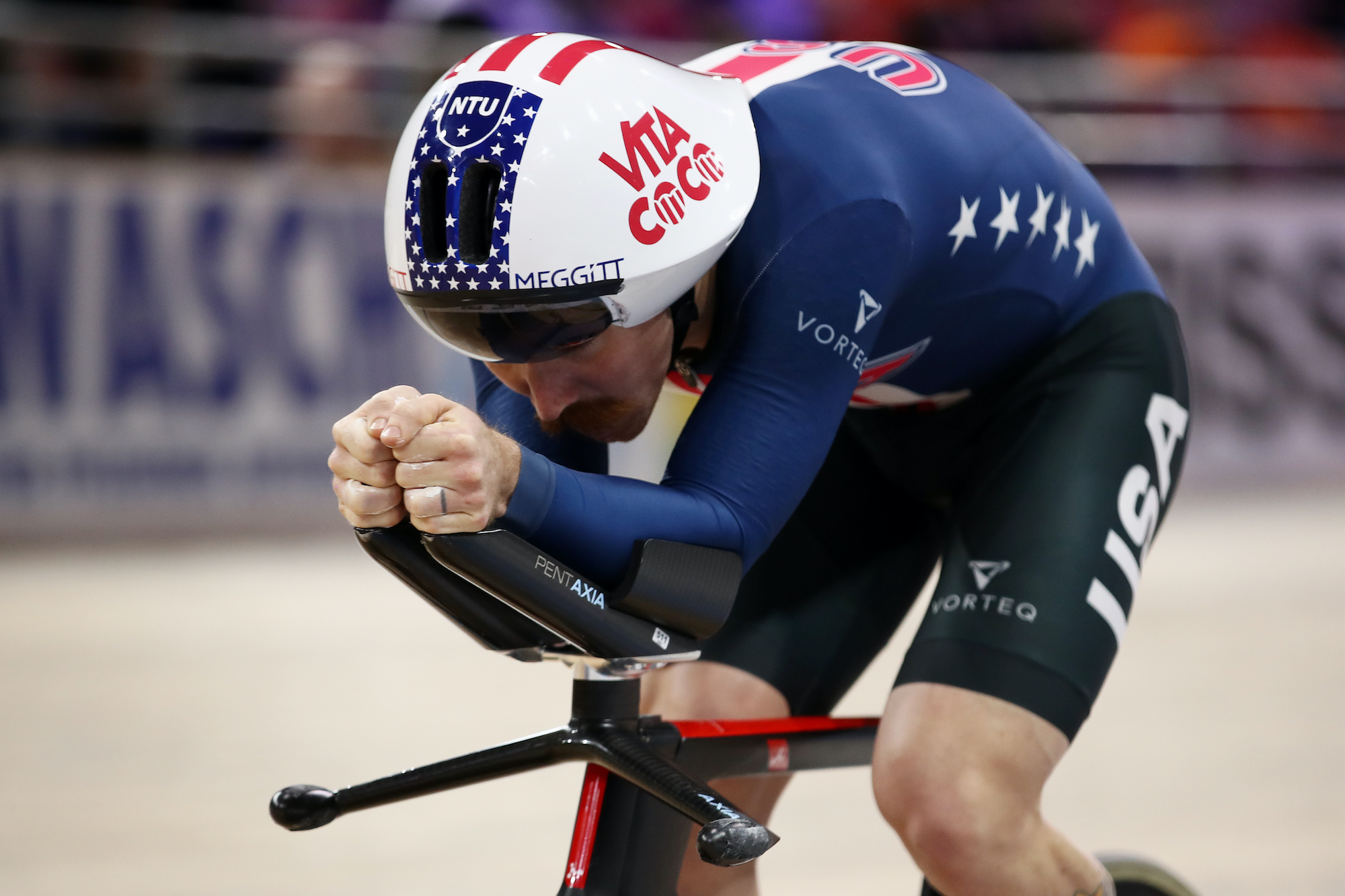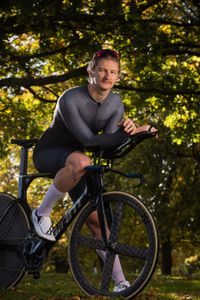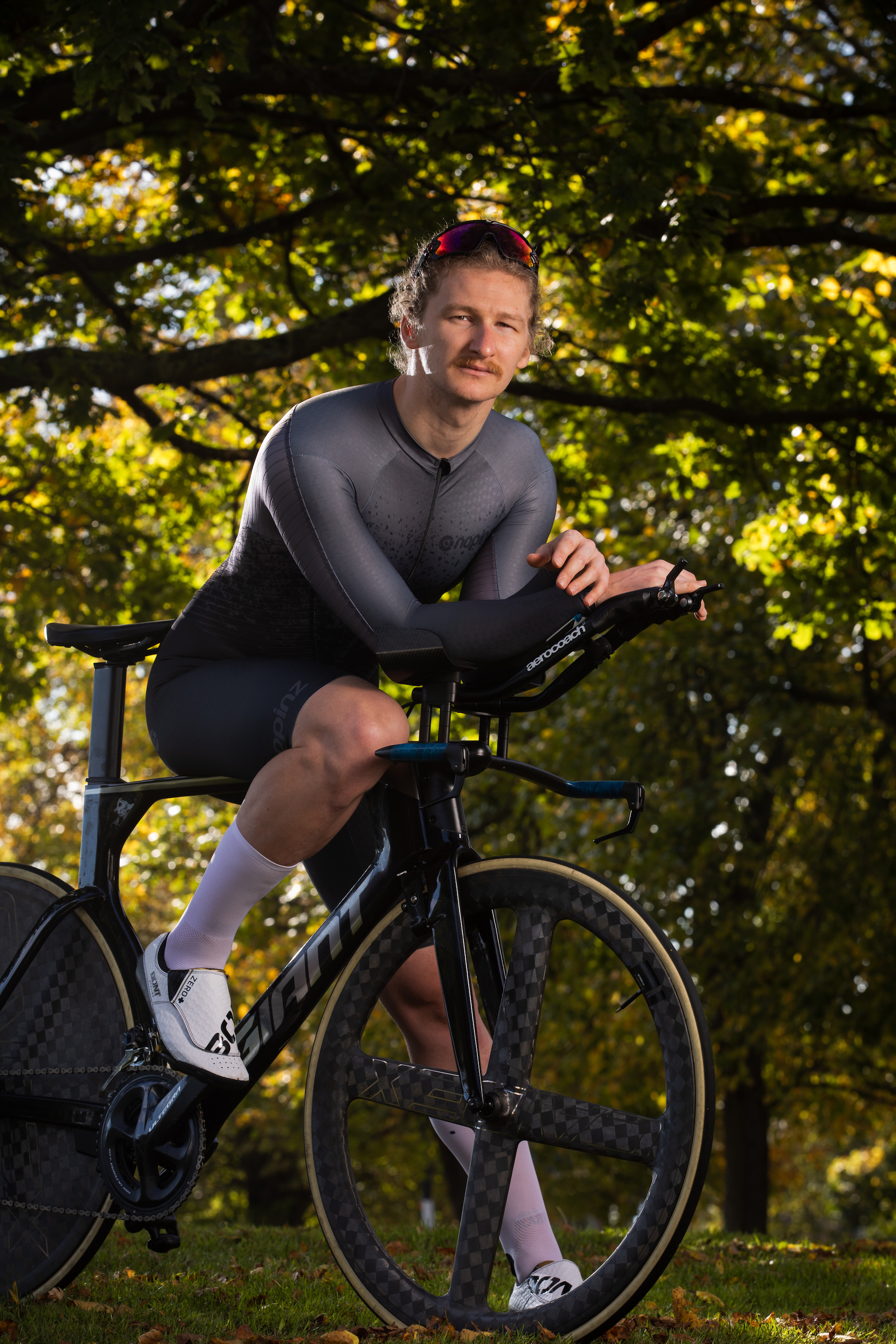‘The dream is a reality’: Ashton Lambie sets staggering individual pursuit record, breaking the four-minute barrier
The US track rider claimed the record from Filippo Ganna


Ashton Lambie has set an absolutely staggering individual pursuit record, becoming the first rider in history to break through the four-minute barrier.
Lambie, from Lincoln Nebraska, set a mind-blowing unofficial record of 3-59.930 at the Aguascalientes velodrome in Mexico on Wednesday (August 18), smashing the previous official world record held by Filippo Ganna of Italy.
The individual pursuit, a 4km time trial for men and 3km for women, has been the centre of a fierce world record battle in recent years, as the fastest times have continued to fall in major track events, despite the discipline being left out of the Olympics.
A post shared by Ashton Lambie (@bahamalongbottom)
A photo posted by on
Filippo Ganna has been the driving force behind the progress in the individual pursuit, repeatedly breaking records which culminated in his phenomenal time of 4-01.934 during the Track World Championships in Berlin last February.
But Lambie (Huub-Wattbike) has made his own mark on the IP discipline, previously holding the world record from 2018 to 2019.
This time the 30-year-old has made cycling history by taking the IP under the four-minute mark for the first time ever.
It wasn’t Lambie’s first attempt however, as he attempted the 4km effort the previous day but only managed a 4-02.
The latest race content, interviews, features, reviews and expert buying guides, direct to your inbox!
Lambie, also an accomplished gravel racer, set his record at the high altitude Aguascalientes velodrome in Mexico, which sits at 1,887m above sea level and is he site of many historic track cycling moments, including Victor Campenaerts’ successful Hour Record attempt in 2019.
While he did benefit from the high altitude conditions, he also set the record without the benefit of another rider on the track, as individual pursuits are usually raced head-to-head by two riders on opposite ends of the track, which can help reduce aerodynamic drag.
>>> This is the 'world's most aerodynamically advanced road bike', according to Ribble
Higher altitude means the air density is lower, which reduces the drag on a rider during their efforts, which makes venues like Aguascalientes popular locations for world record attempts.
Alex Ballinger is editor of BikeBiz magazine, the leading publication for the UK cycle industry, and is the former digital news editor for CyclingWeekly.com. After gaining experience in local newsrooms, national newspapers and in digital journalism, Alex found his calling in cycling, first as a reporter, then as news editor responsible for Cycling Weekly's online news output, and now as the editor of BikeBiz. Since pro cycling first captured his heart during the 2010 Tour de France (specifically the Contador-Schleck battle) Alex covered three Tours de France, multiple editions of the Tour of Britain, and the World Championships, while both writing and video presenting for Cycling Weekly. He also specialises in fitness writing, often throwing himself into the deep end to help readers improve their own power numbers. Away from the desk, Alex can be found racing time trials, riding BMX and mountain bikes, or exploring off-road on his gravel bike. He’s also an avid gamer, and can usually be found buried in an eclectic selection of books.
